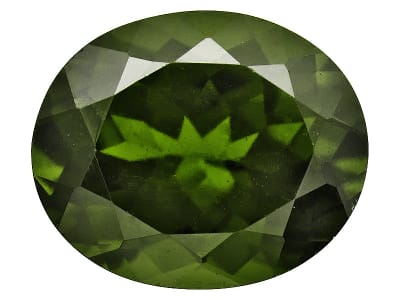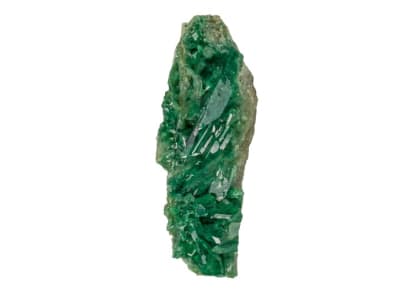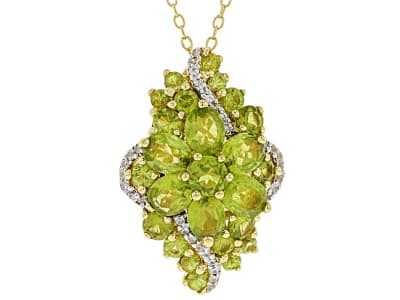Vesuvianite, also known as Idocrase after its discovery at Mount Vesuvius, has crystals that are prismatic and glassy. It is usually green or chartreuse in color, but may be found in yellow to brown, yellow-green, red, black, blue or purple hues.
General Information
Common Name
Vesuvianite
Species
Vesuvianite
Transparency
Translucent-Transparent
Dispersion
Strength: Weak Fire Value: 0.019
Refractive Index
1.713-1.718 Tolerance: (+0.003/-0.013)
Birefringence
0.003- 0.006
Optic Character
Uniaxial
Optic Sign
Positive or Negative
Polariscope Reaction
Aggregate (AGG), Doubly Refractive (DR)
Fluorescence
SWUV: inert to yellow or orange
LWUV: inert to orange yellow
LWUV: inert to orange yellow
CCF Reaction
None
Pleochroism
Dichroic, Un-observable or weak, varying shades of body color
Hardness
6-7
Streak
White
Specific Gravity
3.250-3.500
Toughness
Fair
Stability
Good
Fracture
Conchoidal, Granular, Uneven
Cleavage
Poor, in three directions
Chemical Name
calcium magnesium aluminum silicate
Chemical Formula
Ca10Mg2Al4(SiO4)5(Si2O7)2(OH)4
Crystal System
Tetragonal
Chemistry Classification
Silicate
Vesuvianite Colors
-
 Blue
Blue -
 Brown
Brown -
 Green
Green -
 Green
Green -
 Green
Green -
 Purple
Purple -
 Red
Red -
 Yellow
Yellow
Alternate Names
Idocrase
Countries of Origin
Tanzania, United Republic Of; Afghanistan; Russian Federation; United States of America; Kenya; Switzerland; India; Canada; Pakistan; Unknown; Norway; Brazil; Italy
Care
Moderately soft, so be mindful of scratching


